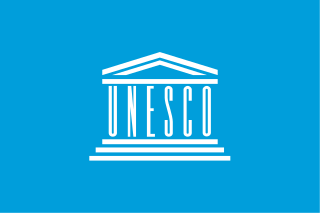The conservation movement, also known as nature conservation, is a political, environmental, and social movement that seeks to manage and protect natural resources, including animal, fungus, and plant species as well as their habitat for the future. Conservationists are concerned with leaving the environment in a better state than the condition they found it in. Evidence-based conservation seeks to use high quality scientific evidence to make conservation efforts more effective.

The Implementation Force (IFOR) was a NATO-led multinational peace enforcement force in Bosnia and Herzegovina under a one-year mandate from 20 December 1995 to 20 December 1996 under the codename Operation Joint Endeavour.
The year 1985 was proclaimed by the United Nations as the International Youth Year (IYY). It was held to focus attention on issues of concern to and relating to youth. The proclamation was signed on 1 January 1985, by United Nations Secretary General Javier Pérez de Cuéllar.

Penikese Island is a 75-acre (0.117 sq mi) island off the coast of Massachusetts, United States, in Buzzards Bay. It is one of the Elizabeth Islands, which make up the town of Gosnold, Massachusetts. Penikese is located near the west end of the Elizabeth island chain.

Environmentalism or environmental rights is a broad philosophy, ideology, and social movement about supporting life, habitats, and surroundings. While environmentalism focuses more on the environmental and nature-related aspects of green ideology and politics, ecologism combines the ideology of social ecology and environmentalism. Ecologism is more commonly used in continental European languages, while environmentalism is more commonly used in English but the words have slightly different connotations.
The UNESCO Prize for Peace Education was awarded annually beginning 1981. The main goal of UNESCO education prize was to encourage excellent effort in the drive to reach a better quality education. The prize endowed up to US$60,000 and honored extraordinary activities for peace education in the spirit of the UNESCO constitution. The prize was phased out in 2013.

Outdoor education is organized learning that takes place in the outdoors, typically during school camping trips. Outdoor education programs sometimes involve residential or journey wilderness-based experiences in which students participate in a variety of adventurous challenges and outdoor activities such as hiking, climbing, canoeing, ropes courses and group games. Outdoor education draws upon the philosophy, theory, and practices of experiential education and environmental education.

Environmental education (EE) refers to organized efforts to teach how natural environments function, and particularly, how human beings can manage behavior and ecosystems to live sustainably. It is a multi-disciplinary field integrating disciplines such as biology, chemistry, physics, ecology, earth science, atmospheric science, mathematics, and geography.
The nature study movement was a popular education movement that originated in the United States and spread throughout the English-speaking world in the late 19th and early 20th centuries. Nature study attempted to reconcile scientific investigation with spiritual, personal experiences gained from interaction with the natural world. Led by progressive educators and naturalists such as Anna Botsford Comstock, Liberty Hyde Bailey, Louis Agassiz, William Gould Vinal, and Wilbur S. Jackman, nature study changed the way science was taught in schools by emphasizing learning from tangible objects, something that was embodied by the movement's mantra: "study nature, not books". The movement popularized scientific study outside of the classroom as well, and has proven highly influential for figures involved in the modern environmental movement, such as Aldo Leopold and Rachel Carson.

The Catalina Island Conservancy is a nonprofit organization established to protect and restore Santa Catalina Island, California, United States. The Conservancy was established in 1972 through the efforts of the Wrigley and Offield families. The Conservancy was created when both families deeded 42,135 acres (170.51 km2) of the island over to the organization—88% of the Island.
Moonis Raza was an Indian academic administrator, regional planner and geographer of international repute. He was born in Ghazipur, Uttar Pradesh, India and educated at Aligarh University, India. He was the older brother of Prof Mehdi Raza, head and professor of geography and Rahi Masoom Raza, a poet, novelist, Indian Film Industry lyricist and screenplay and dialogue writer. He was married to Dr. Prof Shehla M Raza and had 5 children.
Environmental adult education is recognized as a "hybrid outgrowth of the environmental movement and adult education, combining an ecological orientation with a learning paradigm to provide a vigorous educational approach to environmental concerns."

The United Nations Educational, Scientific and Cultural Organization (UNESCO) is a specialized agency of the United Nations (UN) with the aim of promoting world peace and security through international cooperation in education, arts, sciences and culture. It has 194 member states and 12 associate members, as well as partners in the non-governmental, intergovernmental and private sector. Headquartered in Paris, France, UNESCO has 53 regional field offices and 199 national commissions.
An Environmental Literacy Plan (ELP) refers to a state education plan to teach about how ecosystems and human systems are interdependent, particularly, how the consumption choices human beings make alter their ability to live sustainably. ELP’s serve as a central component of the No Child Left Inside movement (NCLI) of 2008 which the House of Representatives passed on September 18, 2008. As outlined by the NCLI of 2008, ELP’s must contain numerous and explicit provisions. The North American Association for Environmental Education (NAAEE) condenses NCLI act into five components which allow states to become eligibile for funds allocated through the NCLI act.

Bikas Chandra Sanyal is an Indian educationist, director of the Fondation de la Maison de l'Inde, Cité international universitaire de Paris in Paris. Before assuming this office he was special advisor to the UNESCO Director General and carried on as its adviser until 2014. He served UNESCO International Institute for Educational Planning Paris for three decades. He also served as the Vice Chairperson of UNESCO International Institute for Capacity Building in Africa.
The Declaration and Programme of Action on a Culture of Peace was adopted by the United Nations General Assembly on September 13, 1999. This occurred after ten months of negotiations in the context of preparations for the International Year for the Culture of Peace.

The North American Association for Environmental Education (NAAEE) is a US-based nonprofit organization.
Anna R. Oposa is a marine conservationist and co-founder of NGO Save Philippine Seas (SPS), an organization that aims to protect coastal and marine environments through education and community-based projects. She helped create the first shark sanctuary in the Philippines and helped designate the thresher shark as a nationally protected species. Oposa aims to combat what she believes are the biggest barriers to marine conservation: lack of coordination between local interest groups and a lack of public education around marine issues.










